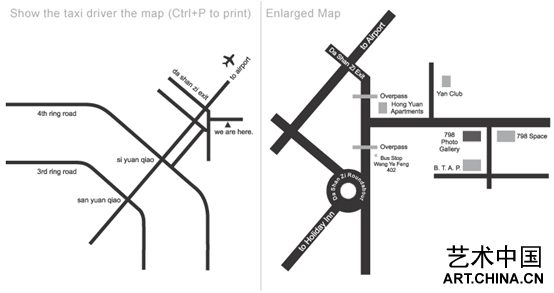|

杨延康摄影作品展 The Photography of Yang Yankang
藏传佛教Buddhism in Tibet
开幕时间:2008年5月24日15:00
展期:2008年5月24日至2008年6月
电话:010-64381784/64375284
电邮: 798@798photogallery.cn
网址:www.798photogallery.cn
地址:北京朝阳区酒仙桥路4号798工厂内大山子艺术区百年印象摄影画廊
Opening time: May.24 3:00pm ,2008
Exhibition time:May.24,2008 –Jun. 2008
Tel:8610-64381784/64375284
E-mail:798@798photogallery.cn
Web:www.798photogallery.cn
Add:No4,Jiu xianqiao road,Chao Yang district, BeiJing.
DIRECTION: 798 PHOTO GALLERY
杨延康的视觉信仰
杨小彦
就在杨延康获得首届“沙飞摄影奖”的“创作奖”之后,我陪杨延康去中山大学传播与设计学院给同学做讲座。我记得当时的场面,杨延康的图片在银幕上出现时,学生的反应是颇为热烈的,尤其当中那些以苦难为主题的作品,引起了同学们的兴趣。在提问时,杨延康谈到了对苦难的偏好。在他看来,苦难的意义无疑和信仰密切相关。或者说,正是因为苦难的普遍存在,信仰才具有了永恒的价值。同学们也许不一定能完全理解到杨延康的意思,但是,这些80后的新一代人,当他们果然有机会从自我优越的环境中目睹现实的苦难时,当他们开始通过苦难意识到信仰的意义时,我想杨延康的工作也就找到了一个归宿,那就是通过苦难去升华人生。
杨延康进入摄影,本身就是一个传奇。当然,我不愿意把他成功的故事描述为一个尽人皆知的通俗版本。在我看来,支撑着杨延康持续工作的是一种来自内心深处的信念,就像他自己反复述说的那样,一种对苦难的特殊“僻好”,一种希望通过对苦难的直视与摄取,来进入人性的深处,从而建构属于每一个个体,尤其是那些长年生活在不幸与苦难当中的个体的尊严。正是这一长远目标,驱使他从一个苦难走到另一个苦难:麻疯病人、流浪群体、陕西天主教,和现在整个藏区的底层生存状态。
我虽然认识杨延康时间很长,但从来没有和他聊过从事摄影的动机。在我看来,我似乎觉得不需要和他交流这一类的信息。他的几大类别的作品和长期的工作已经告诉我,他工作的理由与基点是什么。
杨延康一拿起相机就自觉加入到纪实的队伍,这说明他没有什么“唯美”的负担。对他来说,寻找一种纯粹的影像感可能更重要。他希望镜头有一种穿透力,而这种穿透力显然来自对象,而不是来自个人的幻想。所以,杨延康一开始就对底层感兴趣。但是,直到某一天,他和几个朋友来到广东沿海的麻疯村,我想他才找到了真正的感觉。他所目睹的对象告诉他,什么叫生存,什么叫生命,什么叫忍耐。显然,是现实的力量而不是别的什么,让杨延康的镜头变得尖锐了,让他的影像与尊严有了深度的对应。
重要的是,不幸本身通过杨延康的镜头走向了终极,那就是信仰。人们的尊严是靠信仰来建立的,否则很难想象他们能战胜生命的脆弱。人们之所以没有被击垮,就是因为他们通过信仰获得了永恒的力量,使他们能够抛弃苦难而达到平静。这种力量,杨延康在西北贫穷的农村看到了,他用工作来告诉世人,他所看到的现实,对个人心灵究竟产生了怎样的震撼。然后,他继续深入到这令人震撼的现实中。这一回他走向更为遥远也更为精神性的家园所在,那就是西藏。他继续在那儿寻找心灵的体验,寻找尊严,寻找信仰。
每天不知有多少人进藏拍照。西藏奇异的自然和族群,可能是全世界热爱摄影的人们的重要对象,这表明西藏已经成为世界上生产异国情调精神乐团的“幻觉图像”的原生地。结果是,真实的西藏消失了,真实的西藏人的普通生活,他们的苦难,他们的欢乐,还有他们真正的尊严给改写了。西藏越是吸引人,真实的西藏就离开人们的视线越远。这是一个奇特的案例,也是吸引杨延康以及和他一样拥有坚定信仰的人们的根本原因。对杨延康而言,他希望通过自己的扎实工作,还原一个真实的西藏,一个让人无法回避的、同时有着铁一样尊严的西藏。
这让我不期然地想起首届“沙飞摄影奖”对杨延康获奖理由的陈述,那段陈述对人们理解杨延康的作品及其背后的价值是有帮助的,也相当精彩地概括了杨延康工作的全部意义。
我明白,其实我们无须对杨延康的影像说太多的话。我相信,人们完全可以从他的影像中发现比语言更重要的内容。一旦人们认识到杨延康在视觉与信仰之间的转换时,他们一定会和我一样,发现许多评价会变得多余。除了体验,我们真的无须再说什么。因为,面对信仰,面对由信仰而产生的视觉体验,本身无法用语言来表述。这时,所有人都会同意,只有作品才是最可靠的载体,让信仰在其中闪耀。
2008-3-31-广东东莞
Yang Yankang’s Visual Faith
By Yang Xiaoyan
Shortly after Yang Yankang was awarded the “Prize of Creation” of the 1st “Shafei Photography Award”, I accompanied him to the School of Broadcast and Design of Zhongshan University to give a lecture to the students there. I still remember the enthusiasm from the students when Yang Yankang’s photos appeared on the screen, and those on the subject of misery aroused special interest. In an answer to a question, he talked about his preference for that subject. In his view, the meaning of misery is undoubtedly closely related with faith. Or, in other words, it is because misery exists everywhere that faith is worth eternity. The students might not understand what he said, but when these young people born after 1980 and brought up in a well-off environment have a chance to see misery in reality with their own eyes, and begin to catch the meaning of faith through misery, I think Yang Yankang’s work will reach its destination which is to transcend life through misery.
It is a legend that Yang Yankang entered the realm of photography. I certainly don’t want to tell his success story in a cliche version. In my opinion, what supports Yang’s continuous work is a faith from deep inside, just as he himself has repeated, a special “preference” for misery, a hope to dig into humanity through facing and picturing misery, and to establish a dignity that belongs to each individual, especially to those who live in misfortune and misery for a long time. It is this long-term goal that has pushed him from one misery to another including patients of Hansen’s Disease, wanderers, Shaanxi Catholics, and the grassroots existence of the whole Tibetan area.
Though I have known Yang Yankang for quite a long time, we have never talked about his motivation of becoming a photographer. As I see it, I don’t seem to need to talk with him about such things. The catalogues of his works and long time devotion to photography have told me about the reason and support of his work.
The first time Yang Yankang held up his camera, he joined the realists, which shows that he does not bear the burden of the so-called “aestheticism”. To him, it may be more important to find a pure sense of vision. Therefore, Yang Yankang was interested in the grassroots from the very beginning. However, in my eyes, it was not until one day when he and some of his friends arrived at a village of Hansen’s Disease on the coast of Guangdong Province did he find the “true sense”. What he saw told him what existence is, what life is, and what perseverance is. Obviously, it was the power of reality instead of anything else that sharpened Yang’s lens and enabled his photos to have an exact correspondence with dignity.
What matters is that through Yang’s lens misfortune itself evolves to a terminal: faith. People establish their dignity with faith; otherwise it would be difficult to imagine that they can overcome the fragility of life. They were not defeated because they acquired, through faith, an eternal power that enabled them to abandon misery and reach peace. This power was seen by Yang Yankang in the poverty-struck Northwestern countryside who worked to tell people how stunned a person was by the reality he saw. Afterwards, he went even deeper into this stunning reality, and this time, he went to a remoter spiritual home, Tibet, where he continued to look for soul-experience, dignity, and faith.
There are countless people who go to Tibet to take photos. The fantastic nature and ethnic groups in Tibet may have made it a significant target for photographers all over the world, which means Tibet has become the origin of the “illusion pictures” generated by the world’s exotic spiritual band. The result is that the true Tibet disappeared; the ordinary life of real Tibetans, their misery, their happiness, and their dignity were misportrayed. The more attractive Tibet is, the further it goes from people’s sight. This is a strange case, and it was the fundamental reason for which Yang Yankang and people with the same firm faith were attracted. Yang wants to return a true Tibet, an unavoidable Tibet with iron-like dignity through his work.
This reminds me of the explanation for awarding Yang Yankang on the 1st “Shafei Photography Award” which was a wonderful summary of the whole meaning of Yang’s works and is also helpful for understanding them and their value behind.
I understand that we actually don’t need to say too much about Yang Yankang’s photos. I firmly believe that people can find from his pictures contents that are much more significant than words. Once they realize Yang’s transference between vision and faith, they, like me, will find many comments redundant. We really need not to say anything other than feeling it, because faith, and the visual experience generated from that faith, is beyond words. By then, everyone will agree that only the art works are the most accountable vehicle in which faith can shine.
Prologue is as above.
Dongguan, Guangdong
March 31, 2008

|

